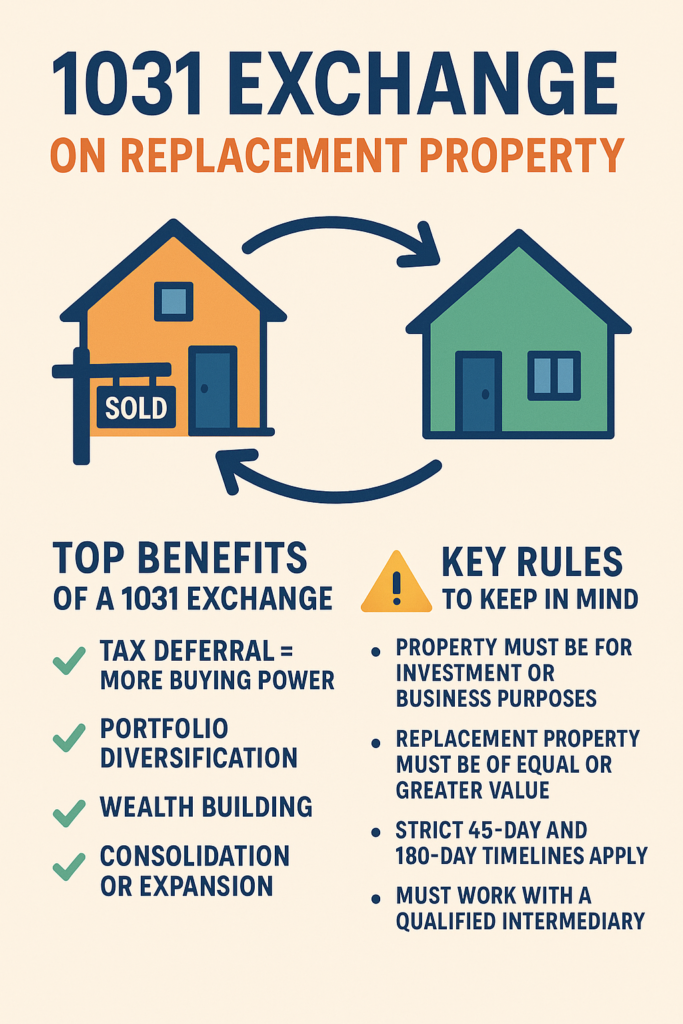If you’re a real estate investor looking to sell one property and buy another, a 1031 Exchange might be your best financial friend. Named after Section 1031 of the IRS Code, this strategy allows investors to defer capital gains taxes by reinvesting the proceeds from a sold investment property into a “like-kind” replacement property.
But what does this really mean for sellers? Let’s break it down.
What Is a 1031 Exchange?
A 1031 Exchange (also known as a “like-kind exchange”) allows a property owner to sell one investment property and purchase another without immediately paying capital gains tax.
This tool is specifically for investment or business properties, not your primary residence.
How It Works?
1- Sell Your Investment Property
Once you accept an offer and open escrow, you must notify your Qualified Intermediary (QI) before closing.
2- Engage a Qualified Intermediary (QI)
You must use a QI to handle the funds between the sale and purchase. You never touch the money!
3- Identify Replacement Property
You have 45 days from the closing of your relinquished property to identify potential replacement properties (up to three, or more under special rules).
4- Purchase the Replacement Property
You must close on one or more of the identified properties within 180 days of selling your original property.
Top Benefits of a 1031 Exchange
1. Tax Deferral = More Buying Power
Instead of giving away up to 30% in capital gains taxes, you reinvest the full proceeds, allowing for greater appreciation potential on a larger asset.
2. Portfolio Diversification
Want to exchange one high-maintenance rental into multiple turnkey condos? Or shift from residential to commercial investments? A 1031 Exchange makes that possible.
3. Wealth Building
By continuously deferring taxes through strategic exchanges, investors can compound their wealth and move up the property ladder with more powerful assets.
4. Consolidation or Expansion
Sell multiple properties and exchange into one larger building (or vice versa), making it easier to manage your portfolio or expand strategically.
5. Estate Planning Advantage
If the investor passes away holding the exchanged property, heirs may receive a step-up in basis—potentially eliminating capital gains tax altogether.
Key Rules to Keep in Mind:
Property must be for investment or business purposes.
Replacement property must be of equal or greater value.
Strict 45-day and 180-day timelines apply.
Must work with a Qualified Intermediary—you cannot touch the funds.
Watch out for “boot” (any cash or non-like-kind property received), which may be taxable.
Final Thoughts:
A 1031 Exchange is a powerful tool for smart real estate investors. Whether you’re upgrading your portfolio, consolidating properties, or building generational wealth, the ability to defer taxes legally and strategically can have a major long-term impact.
If you’re considering selling and want to explore the 1031 Exchange option, let’s connect. I can help you understand the process, identify potential replacement properties, and coordinate with tax professionals to ensure a smooth and compliant exchange.
Call me for a free consultation
Silva Babaian / Realtor
818-414-6744
Email: shbrealtor@gmail.com
